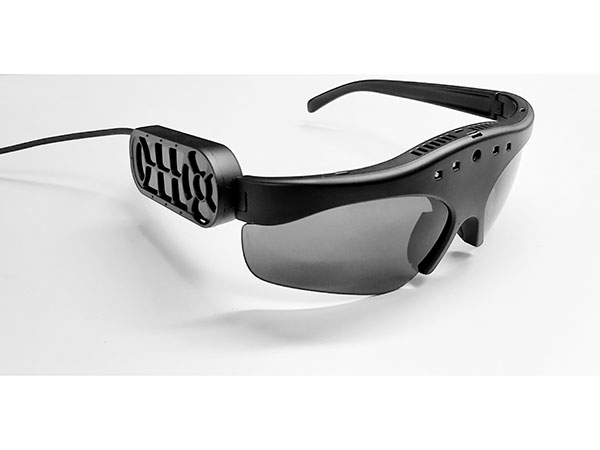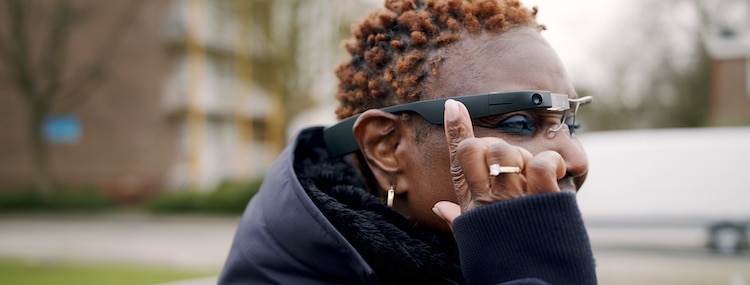The Future of Assistive Technology for the Blind: Empowering Independence
The Future of Assistive Technology for the Blind: Empowering Independence
Blog Article
Discover Advanced Assistive Gadgets for Individuals With Visual Impairments
The landscape of assistive innovation for people with aesthetic impairments is progressing quickly, offering a range of cutting-edge devices that enhance freedom and interaction. From clever glasses that flawlessly combine visual input with auditory guidance to innovative navigating applications that redefine spatial understanding, these tools are reshaping opportunities.
Smart Glasses Innovations
Smart glasses represent a considerable innovation in assistive modern technology for individuals with visual disabilities. These innovative gadgets integrate numerous functions developed to enhance the customer's interaction with their atmosphere. Outfitted with sensors and cams, clever glasses can catch real-time aesthetic details, which is after that processed and shared to the individual with sound comments or haptic sensations. This performance permits people to get immediate descriptions of their surroundings, boosting their ability to navigate and engage with the globe.
In addition, innovations in synthetic knowledge have better enhanced the abilities of wise glasses. Artificial intelligence formulas can acknowledge faces, reviewed message, and recognize things, making them vital tools for day-to-day jobs. Users can receive acoustic hints that give context about their setting, fostering self-reliance and confidence.
Additionally, the ergonomic layout and light-weight nature of numerous smart glasses make them suitable for extended usage, ensuring convenience while improving capability. As these devices remain to develop, they hold the prospective to revolutionize the means people with visual disabilities experience their every day lives, connecting the gap between availability and innovation. The recurring research and development in this field promise to expand the possibilities for smart glasses, making them a vital element of contemporary assistive gadgets.
Navigating Application and Equipment
Many navigation apps and tools have emerged as vital resources for people with visual disabilities, considerably enhancing their capacity to go across strange settings. These modern technologies leverage general practitioner capability, audio hints, and real-time data to offer customers with exact navigation aid.
One famous instance is the Aira application, which links users to skilled agents who can supply aesthetic descriptions of environments and navigating guidance with a live video feed. This service boosts the user's spatial understanding and self-confidence while navigating. One more noteworthy tool is Seeing Eye GPS, which provides voice-guided navigating and points of passion, allowing customers to access essential info concerning their environments.

As innovation remains to development, the growth of much more advanced navigation tools guarantees to further encourage people with visual impairments, facilitating seamless movement and integration into diverse settings. Such innovations contribute in advertising a more inclusive society.
Braille Technology Improvements
Over the last few years, innovations in Braille innovation have considerably changed just how individuals with aesthetic problems accessibility info and involve with the globe around them. The advancement of portable Braille displays has revolutionized analysis by permitting customers to connect wirelessly to tablet computers, computers, and mobile phones. These devices convert text right into Braille in real-time, enabling seamless communication with digital content.
In addition, cutting-edge Braille printers have actually emerged, improving the manufacturing of tactile materials. Modern embossers are much faster and a lot more Your Domain Name efficient, enabling the fast development of Braille records and instructional products. This performance reduces the time and expense connected with creating Braille sources, making optometrist hours them much more obtainable to institutions and companies.
Additionally, the combination of Braille with various other modern technologies, such as artificial knowledge and equipment understanding, has opened up new avenues for customized understanding experiences. Voice recognition and synthesis innovations can complement Braille, supplying an inclusive method to info circulation.
As the need for inclusive education and office atmospheres expands, these technical developments play a crucial role in encouraging individuals with visual disabilities, ensuring they have equivalent access to details and chances in various aspects of life.
Wearable Tools for Freedom
A growing selection of wearable gadgets is improving independence for people with visual disabilities, supplying cutting-edge solutions that boost navigation and everyday living. Braille displays and notetakers. These gadgets utilize innovative modern technologies to give real-time feedback and support, promoting autonomy in various settings

Wearable technology also consists of smartwatches that can be set with availability features, making it possible for customers to get notifications, track their locations, or also ask for aid with the touch of a button. Some tools integrate synthetic intelligence to examine the doc eye environment, offering audio descriptions of close-by things or people.
Voice-Activated Assistive Solutions
Leveraging voice-activated assistive solutions has actually changed the landscape of support for individuals with aesthetic impairments, giving hands-free interaction and access to a range of jobs. These technologies make use of natural language processing and man-made knowledge to enable users to do everyday activities via easy voice commands.

Moreover, recent innovations in voice recognition accuracy have enhanced the customer experience substantially, accommodating diverse accents and speech patterns. This inclusivity guarantees that more people can benefit from these modern technologies, cultivating a better sense of autonomy.
Final Thought
Finally, the development of advanced assistive devices dramatically improves the self-reliance and lifestyle for people with aesthetic impairments. Developments such as wise glasses, navigating apps, Braille modern technology, wearable gadgets, and voice-activated remedies collectively cultivate a more inclusive environment. These innovations empower customers to browse their environments with self-confidence and involve more fully with the globe, ultimately promoting greater access and equivalent chances for people facing visual obstacles.
The landscape of assistive modern technology for individuals with aesthetic disabilities is evolving rapidly, offering an array of innovative devices that improve autonomy and involvement.Smart glasses represent a significant innovation in assistive innovation for people with aesthetic problems. As these tools continue to develop, they hold the possible to revolutionize the way people with aesthetic impairments experience their day-to-day lives, linking the gap in between availability and innovation.In current years, improvements in Braille technology have considerably changed how people with visual impairments access information and engage with the globe around them. These modern technologies empower customers to browse their environments with self-confidence and involve more completely with the globe, ultimately promoting higher access and equivalent chances for individuals facing visual challenges.
Report this page